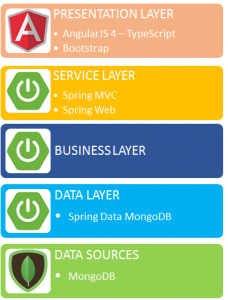Qui la parte precedente dell’articolo: Creare una web application con Spring Boot, MongoDB, Angular 4 e TypeScript e deployarla in cloud come Microsoft Azure Webapp – Parte 1
Creare una View
Ora ci spostiamo nel folder “templates” e creiamo un nuovo file HTML che chiamiamo “index.html”. Questa… (Read the full article)

 In questa nuova serie di articoli vedremo come creare una semplice web application utilizzando Spring Boot come framework di accelerazione per lo sviluppo del back-end e dei servizi REST, MongoDB come database NoSQL e Angular 4, con il supporto di TypeScript, come framework javascript per il front-end.…
In questa nuova serie di articoli vedremo come creare una semplice web application utilizzando Spring Boot come framework di accelerazione per lo sviluppo del back-end e dei servizi REST, MongoDB come database NoSQL e Angular 4, con il supporto di TypeScript, come framework javascript per il front-end.…